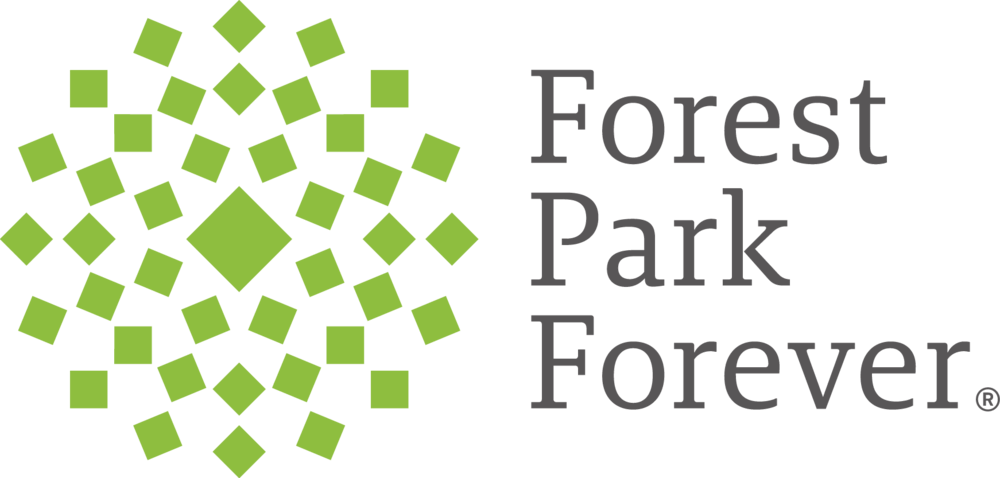Park Attractions & Destinations
From world-class cultural institutions to beautiful natural and recreational areas, Forest Park has something special in store.
Forest Park Map (click to enlarge)
Cultural Institutions
Missouri History Museum
314.746.4599 | mohistory.orgThe Muny (outdoor musical theatre)
314.361.1900 | muny.orgSaint Louis Art Museum
314.721.0072 | slam.orgSaint Louis Science Center and James S. McDonnell Planetarium
314.289.4400 | slsc.orgSaint Louis Zoo
314.781.0900 | stlzoo.orgShakespeare Festival St. Louis
314.531.9800 | sfstl.com
Dining
Forest Perk Café in the Visitor's Center
314.961.7588 x275The Boathouse Restaurant
314.722.0818 | boathousestl.comKeagan's Restaurant at The Highlands
314.531.7773 | highlandsgolfandtennis.com/keagans-restaurantMissouri History Museum Dining
The Key Bistro and Key Bistro Express are currently closedRuthie’s Bar & Grill at the Probstein Golf Course
314.367.1337 x234 | forestparkgc.com/ruthies-bar-grillSaint Louis Art Museum Dining
314.655.5490 | www.slam.org/diningSnowflake Café in Steinberg Ice Skating Rink is closed
Steinberg Rink is being restored | construction update websiteSt. Louis Zoo Dining
314.781.0900 | website
Landmarks
Cabanne House
The first brick farmhouse west of the Mississippi River, this was built in 1819. More informationDennis & Judith Jones Visitor and Education Center
Visit our Visitor's Center pageThe Jewel Box
With its unconventional, cantilevered, vertical glass walls rising majestically 50 feet high, the Jewel Box opened in 1936 to national acclaim. Truly special event and wedding space. More informationWorld's Fair Pavilion
This magnificent open-air shelter has been one of the most popular and impressive attractions since it was built in 1909 with proceeds from the 1904 World's Fair. To check availability of the Pavilion, call 314.289.5372 between 9:00 a.m.-4:00 p.m. or visit this website.
Natural Highlights
The Cascades
Built in the 1930s with WPA federal funding, the 75-foot waterfall known as the Cascades is named for the World’s Fair Cascades that ran down Art Hill during the fair. Located on a steep slope west of the Saint Louis Art Museum, the Cascades has been the site for everything from marriage proposals and weddings to family photos and spontaneous picnics. Renovated with a gift from the Flegel family, the Cascades are the starting place for the new Forest Park River and continue to be a popular Forest Park destination.John F. Kennedy Memorial Forest
The Missouri Department of Conservation has installed hiking trails throughout the Kennedy Forest. The trails are destinations for bird watchers, as more than 100 species of migratory warblers have been spotted in Forest Park.Nature Reserve Prairie, Savanna & Wetlands
Key to the Park’s Master Plan was the re-establishment and preservation of the Park’s extensive natural areas. The ultimate goal is to create a nature corridor, or “Forest Park Nature Reserve,” to maximize the Park’s ecology and positive environmental impact, natural balance, educational opportunities, wildlife habitats and aesthetics. More about our conservation efforts here.Pagoda Circle / Nathan Frank Bandstand
The island in the center of Pagoda Lake was the site of the Park’s first bandstand from 1876, also called the music pagoda. The original pagoda was deemed unsafe and closed in 1911. It was damaged beyond repair by storm, the wreckage burned and was torn down around 1912. It was replaced by the Nathan Frank Bandstand in 1925. Donated by Nathan Frank, the bandstand was designed by Heffensteller, Hirsch and Watson. Pagoda Circle was restored as part of the Forest Park master plan. The landscape, designed by the firm of Oehme van Sweden, was planted by volunteers from the Flora Conservancy.The Anne O’C. Albrecht Nature Playscape
The Nature Playscape opened in June of 2021. The Nature Playscape is a 17-acre experiential play space with natural landscapes that include native and diverse species. Featuring nine distinct activity areas, the free destination includes sand play areas, willow tunnels, stump steppers, boulders and rocks, hand water pumps and much more. The goal: Encourage visitors — especially kids — to connect with nature as they engage their senses as they explore, discover and learn.
Recreation & Fun
Athletic Fields
Boeing Aviation Field, Central Fields, Langenberg Field and Cricket Field. To rent, contact the Department of Parks, Recreation and Forestry at 314.289-5389.Bike Rentals
314.798.2961 | paddleforestpark.comBird Watching
See Forest Park Forever's Birding Programs pageBoating (including stand up paddle boards, canoe, kayaks and paddleboats)
314.366.1555 | paddleforestpark.comThe Norman K. Probstein Golf Courses
314.367.1337 | forestparkgc.comDwight Davis Tennis Center
314.361.0177 | dwightdavistennis.comFishing
Fishing is permitted in the lakes and lagoons in Forest Park except where restrictions are posted. The primary fishing lake is Jefferson Lake, located just south of Steinberg Ice Skating Rink. A valid Missouri fishing license is required. Visit mdc.mo.gov/fishing.Handball & Racquetball
Four handball and four racquetball courts are available on the north side of the Dennis & Judith Jones Visitor and Education Center and available on a first-come basis.
forestparkmap.org/handball-racquetball-courtsThe Highlands Golf & Tennis Center
314.531.7773 | highlandsgolfandtennis.comPicnics
There are over a dozen picnic grounds and pavilions available for rent from the City of St. Louis. Forest Park amenities are listed hereSledding
Is there currently snow on the ground? If so, there are likely people sledding on Art Hill, located between the Emerson Grand Basin and the Saint Louis Art Museum.Steinberg Ice Skating Rink at the Glade is closed
Steinberg Rink is being restored | construction update website
Statues & Monuments
In August 2014, Forest Park Forever published Forest Park Statues & Monuments, a 48-page booklet and companion microsite exploring the histories of 20+ pieces here in the Park.
Thanks to the Greater Saint Louis Community Foundation and Trio Foundation of Saint Louis for their generous funding of this project.
